This article was first published on the WeChat public account: Poker Investors. The content of the article belongs to the author's personal opinion and does not represent the position of Hexun.com. Investors should act accordingly, at their own risk.
Poker Guide: The market for the masses is a paradise for speculators because of the large number of flocks, and the niche market has become a paradise for arbitragers because of the low population. At present, China's futures market has developed to this day. The main body of the transaction is still dominated by hedging transactions and speculative trading. The proportion of arbitrage transactions is still small, and the number of arbitrage concerns in the PTA industry chain is very small. However, this brings a lot of opportunities to arbitrage.
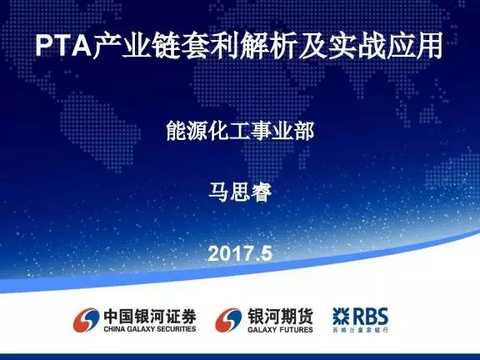
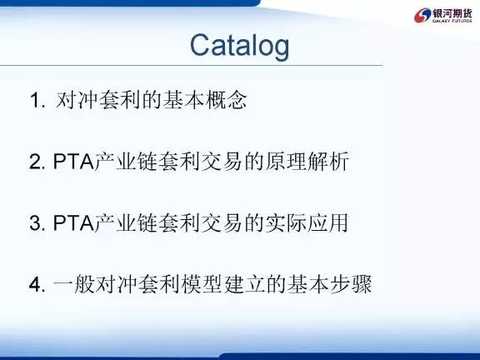
The terminal demand has not improved, and the accumulation of polyester end stocks is a common situation in PTA in recent years. In 2016, the sharp rebound of crude oil did not change the long-term decadence of PTA. How to find a certain profit in such unconfirmed market? Under this opportunity, Mr. Ma Sirui, the male god of Galaxy Futures, will come up with a new idea for you to talk about the PTA arbitrage opportunities you missed in those years.
The course is divided into the following parts: the first is the basic concept of hedge arbitrage; the second is the arbitrage basis and principle analysis of the PTA industry chain; the third is the practical application of the PTA industry chain arbitrage transaction; It is the basic step in the establishment of a hedge arbitrage model.
Although this open class is mainly aimed at PTA, I am more willing to share some methods with you to provide some ideas, not just for a certain product.
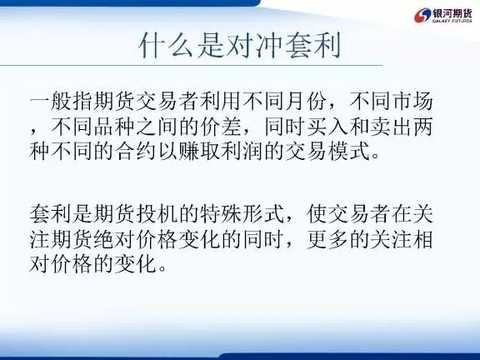
First, hedge arbitrage generally refers to the trading pattern in which futures traders use different months, different markets, and different varieties to simultaneously buy and sell two different contracts to make a profit. Arbitrage is a special form of futures speculation, allowing traders to pay more attention to changes in relative prices while paying attention to changes in the absolute price of futures. When it comes to arbitrage, you have to think about a problem. What kind of market will have opportunities for arbitrage? Or is the market really effective? Obviously, the market is not completely effective, and the price of the market does not fully reflect the fundamental changes.
What should the market look like? First, the market should be ineffective enough that active traders can cover their own transaction costs. Second, the market should be effective enough to stop unnecessary market transactions. The arbitrage market is usually an effective but ineffective market.
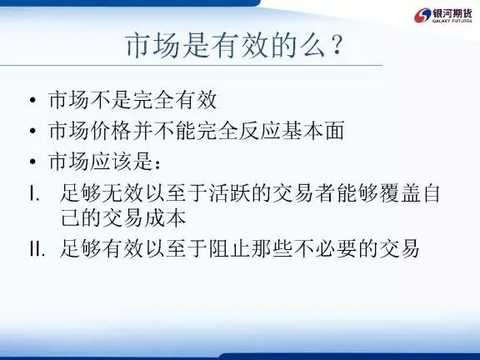
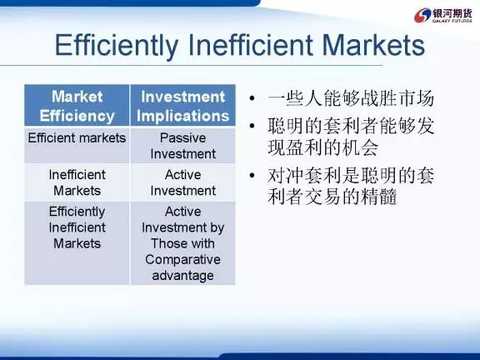
If you divide the following market characteristics, you can roughly summarize several different trading modes. Assuming the market is effective, the most ideal investment method is passive investment, such as ETF index funds. Whether it is commodities or crude oil, it is certainly not wrong to follow the index because the market is effective. Assuming the market is not effective, then the most ideal investment method is active investment, such as active management funds, such as optimistic about the rise or fall of PTA products, just choose long or short on futures.
There is also a situation where the market is effective but ineffective. If the investor has an advantage over the average person, then some active transactions can still be made. Such people call them smart people, and such people are easy to find opportunities for arbitrage. Such an opportunity will outperform others in the market in a certain market or in a certain period of time.
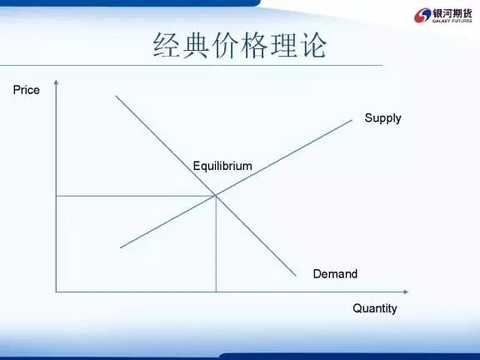
Before arbitrage, it is necessary to explain some classic models of supply and demand at the level of microeconomics. This model of supply and demand refers to the process in which the relationship between the supply and demand of goods is interrelated and mutually constrained under the conditions of the commodity economy, and the final reaction between the relationship between production and consumption in the market. From this picture, the slope of the demand curve is always negative, tilting downward, and the slope of the supply curve is always positive and inclined upward. The reason is that, assuming a certain supply situation, if the price falls, the demand will increase. Also under certain demand conditions, if the price rises, the supply will increase.
But the market will eventually maintain a balanced position, when the supply and demand curve will spread, thus forming a balance. If the market is unbalanced, there will be two situations: one is oversupply and the other is in short supply. In either case, there will be a gap in the curve of supply and demand, and such a gap is the inherent logic of price fluctuations. It is precisely because of such a gap that arbitrage trading becomes possible. According to the traditional microeconomics, the supply and demand curve only considers supply and demand, but never considers the inventory factor, and the inventory is just right. It is the most essential part of the real market, so the formula for inventory is supply minus demand.
Many people think that the positive or negative size of the inventory value is causally related to the price increase, but it is not the case. High inventory does not necessarily correspond to low prices, and low inventory levels may not necessarily result in large price increases. For example, in the ethylene glycol market in 2015, when the port inventory in East China was less than 700,000 tons for a long time, the price of ethylene glycol was still at a relatively low level in history. Such low stocks did not stimulate the rise in ethylene glycol prices. In arbitrage trading, it is often not necessary to consider static inventory, but should consider dynamic results, the price reflects more of the expected, so the price rise and fall is the cause, and the inventory change is the result, which may be with many people The previous understanding is not the same.
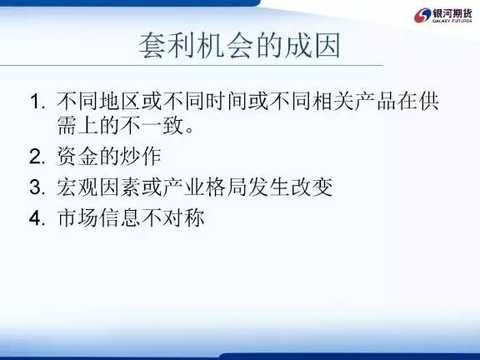
With the above microeconomics foundation, analyze the causes of arbitrage. First, inconsistencies in supply and demand in different regions, at different times, or between different products can cause different price fluctuations. For example, the familiar PTA arbitrage of ethylene glycol, although the correlation between these two products is strong, but due to different basic factors, there will be large fluctuations in the spread, which will bring some opportunities for arbitrage.
Secondly, the speculation of funds, the speculation of funds will bring about the irrational market, will let the price deviate from the fundamentals in a certain period of time, but in the end, it will still be dusty and earthy. Macro factors or changes in the industrial structure cannot be ignored. For example, the arbitrage of the RMB in the offshore market has been particularly popular from 2013 to 2014. Some foreigners will carry the renminbi to an offshore account opened in Hong Kong. The reason is very simple. The renminbi has unilaterally appreciated various currencies during this period, especially some zero interest rates or near negative interest rates. The country is very rich in asset chasing for the renminbi.
There are also some factors that are asymmetry in market information, such as the relatively popular fixed increase in the stock market. The increase in the discount on the market relative to the market price is also an arbitrage.
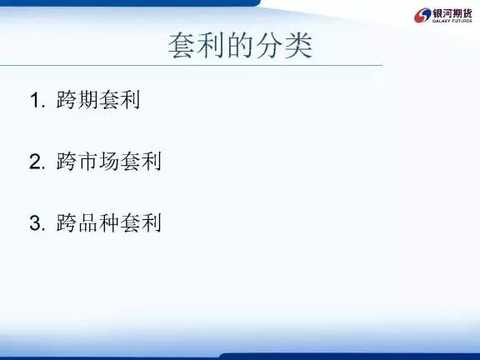
For the above factors, arbitrage will generally have the following three categories: the first is inter-temporal arbitrage, the second is cross-market arbitrage, and the third is cross-species arbitrage.
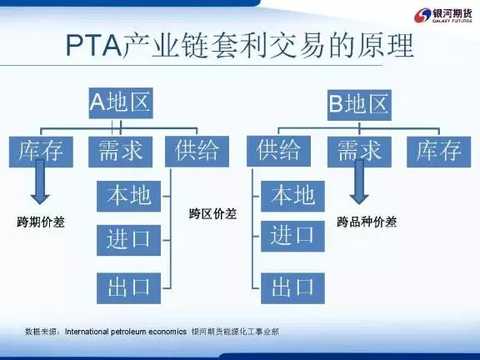
The above picture shows the inclusion of these three arbitrage forms. The inventory on the chart is the result of price fluctuations rather than the cause. Take PTA as an example. The monthly difference between 5 and 9, or the monthly difference between 9 and 1, is the inventory change, which will be followed by Answer this for this.
Secondly, the spread between the two regions of A and B essentially reflects the flow of trade, and the generation of trade is the most basic model of arbitrage. Give a life example, purchasing. Some imported goods are only because the price in China is too high, which leads some people who have gone abroad to find business opportunities. Therefore, the reason why purchasing in these years is more prevalent is that foreign prices are low, and domestic prices are high. Buy low and sell high to earn the difference.
Let's take a look at the import and export situation in the history of PTA. Before June 2013, due to the relatively insufficient production capacity of domestic PTA plants, the import dependence has remained above 40% and even more. Due to the strong demand, domestic PTA prices remain high, and a large number of PTAs cannot be digested in Japan, South Korea, Taiwan and other regions. These countries want to export.
Since then, due to the large-scale production of new domestic PTA devices, domestic PTA production can not only cover domestic demand, but the price advantage of imported goods is no longer there, so the import volume of PTA is gradually shrinking. The demand in the figure corresponds to the relationship between the upper and lower industry chains. From the perspective of the overall industrial chain of PTA, the most primitive chain is crude oil, naphtha, to PX, then to PTA, from PTA to polyester, and from polyester to textile. The strengths of supply and demand in the industrial chain will inevitably lead to some arbitrage opportunities, and there will be some practical examples.
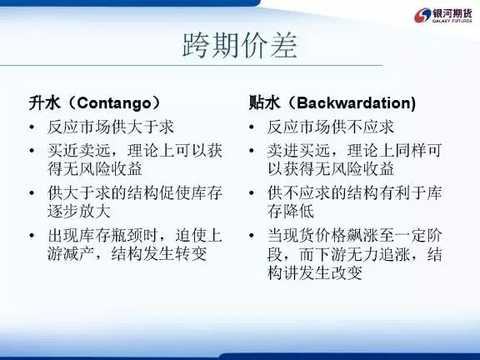
Intertemporal arbitrage is a monthly difference structure, divided into Contango and Backwardation. The structure of Contango corresponds to the market oversupply. If you buy in the near month and throw it in the distant month, the spread can cover the cost of warehousing and interest delivery, and you can get a risk-free income. Moreover, due to the relatively large supply structure in recent months, the number of people participating in arbitrage in this market will gradually increase. For example, if the current PTA position, the position of a single month can easily be 2 million hands, and even have the opportunity to touch the historical amount of 3 million hands. The domestic production of PTA for one month averages around 2.8 million tons (5 tons for the first hand).
Of course, such a structure is not static. If there is a bottleneck in the inventory situation, such as the lack of storage space, too much spot on the market will cause the spot price to continue to fall, and the spread will gradually increase, thus forcing upstream suppliers to cut production. To reverse the supply and demand pattern.
Another structural Backwardation of the monthly difference corresponds to the market in short supply. If you choose to buy in the distant month and sell it in the near month, as long as the purchase of the distant month does not have credit risk, the performance can be carried out normally, and you can also get a chance of risk-free income. The supply shortage is conducive to the gradual reduction of inventory. When the spot price soars to a certain level, the downstream profit will be greatly reduced, which will eventually lead to downstream production reduction. The weakening of raw material demand will eventually reverse the current supply and demand pattern.
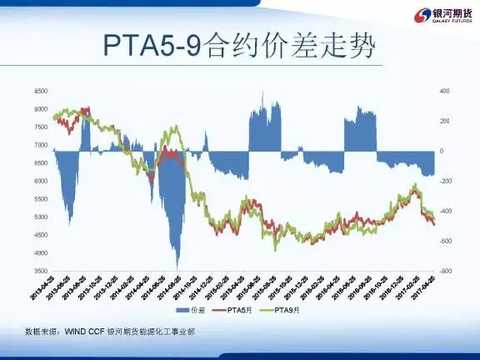
This picture shows the trend of the PTA between May and September, and the market has been selected for the last 5 years. It can be found that the price of PTA has fallen sharply in the past five years, and in the structure of the monthly difference, except for the influence of a part of the change of the moon, most of them correspond to the structure of Contango, of course, according to the main contract and the spot. The spread may be more obvious.
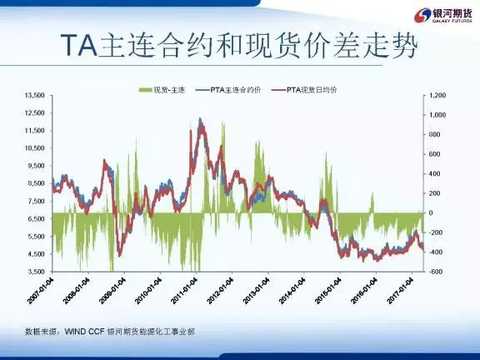
This TA's continuous contract has selected the spot price difference chart for 10 years. It can be clearly found that the price of PTA in 2011 has created the highest record in history. The price of PTA has been declining year by year since then. It is a huge release of production capacity.
If we distinguish between the structure of the premium and the premium, the 2011 and the third quarter of 2014 basically show Backwardation. Of course, the price is still up and down. However, in the second half of 2012 to the first half of 2013, due to various difficulties in the delivery of PTA, the supply at the spot end was relatively tight. Therefore, the structure of Backwardation has deepened and the price has rebounded sharply. Since then, due to the substantial increase in domestic PTA capacity, coupled with the sharp decline in the price of crude oil in the overall petrochemical industry after the third quarter of 2014, PTA supply is no longer in short supply, but there is a serious excess, so the price is falling.
The change in the structure between the months has changed from Backwardation to Contango, and it continues here. It is because of the continuous structure of Cantango that the PTA's term arbitrage becomes very active. The innovation was high, and the trade atmosphere of the once-smooth spot became active. The unclear PTA social inventory structure gradually became the mainstream of the market due to warehouse receipts, resulting in a lot of hidden inventory becoming dominant inventory in the past.
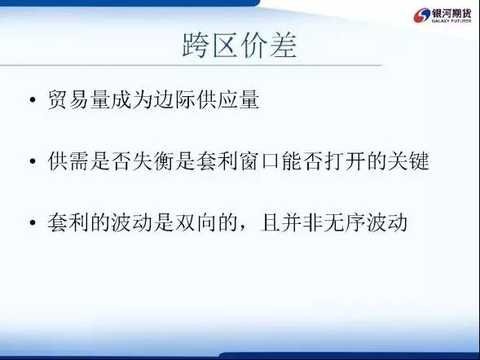
Cross-region arbitrage spreads. First, trade is the core, and the number of tradeables becomes the marginal increase in supply. In the third quarter of 2010, China began to seek anti-dumping duties from South Korea's PTA. On the one hand, it explained that the market supply of TA was extremely unbalanced in the year, and the overall market showed a trend of short supply. On the other hand, it also showed that cross-border trade was very favorable at that time. It can be shown that in China, it can sell a relatively high price, and the exporting countries of PTA do have a surplus supply.
Therefore, whether the imbalance between supply and demand is a key factor in whether the arbitrage window can be opened. Such arbitrage fluctuations are two-way. If the trade structure of the two sides is reversed, China has gradually exported some PTAs overseas since the previous years. The current export volume is average. It is around 50,000 tons a year. Therefore, the emergence of such arbitrage opportunities is not disorderly, but has inherent logic.
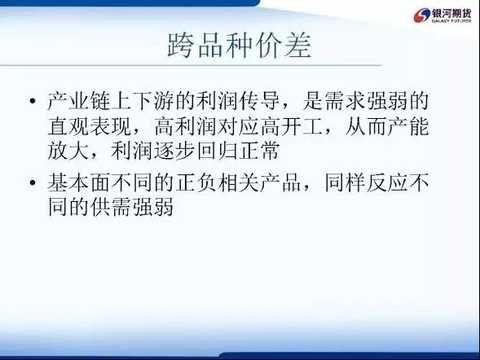
The so-called cross-species arbitrage can simulate the trend of the two commodities in the price difference based on the statistical arbitrage method, but more often, the arbitrage operation based on the upstream and downstream relationship of the industrial chain is still needed. The upstream and downstream profit transmission of the industry is a direct manifestation of the strength of demand. High profits should be correspondingly high, so that the production capacity is enlarged and the output is enlarged, resulting in the final profit gradually returning from high to normal. Taking PTA in 2017 as an example, the trend of PTA processing fees in early 2017 is a very straightforward example. The price of PTA in January-February has soared continuously, and the spot processing fee of PTA has once exceeded 800 yuan per ton, while the disk The processing fee has exceeded 1000 tons per ton. Such high profits will inevitably lead to high-load operation of the entire industrial chain. In the case where the inventory is still available and the demand is not weak, the high processing fee can be maintained.
However, after the Spring Festival holiday, the demand for polyester is no longer strong, and the accumulated days of inventory even exceed the level of the same period of 2016. The result is a decline in processing fees. Recently, the average processing cost of PTA in April has been on average. 350 yuan / ton, or even lower position.
There are also two varieties with different fundamentals, positive and negative, and different strong and weak varieties can make an arbitrage if they have strong links in the logic of the industrial chain. For example, PTA's arbitrage model for ethylene glycol, compared with the serious excess of TA, even if the supply of coal-based ethylene glycol is calculated, it needs to be imported from overseas. These two also serve as polyester raw materials, and the reaction will naturally be different. However, such arbitrage is relatively large in the actual operation due to the relative degree of product, and the volatility of the two products is not enough to match. It doesn't seem so simple, but more often it is doing two different unilateral castings.
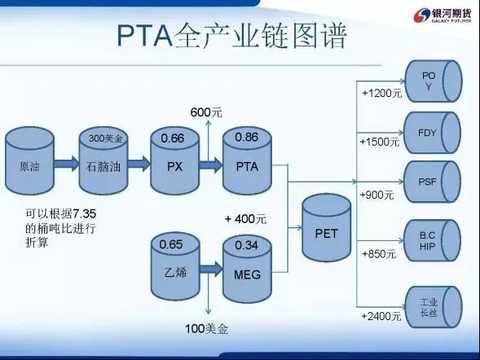
The entire PTA industry chain map has been combed from crude oil and has been involved in all products of polyester yarn. If it is cross-product arbitrage, in theory, as long as there is upstream and downstream relationship, this chart can be arbitrage, but it is subject to some market factors such as market liquidity, market volume and capital capacity. There are some arbitrage methods that can't be carried out, but the formation of arbitrage ideas will provide better help for the judgment of the price trend of a single variety.
Looking at a few practical examples, through the arbitrage of the entire PTA industry chain, I hope that everyone can have a preliminary understanding of this industry.
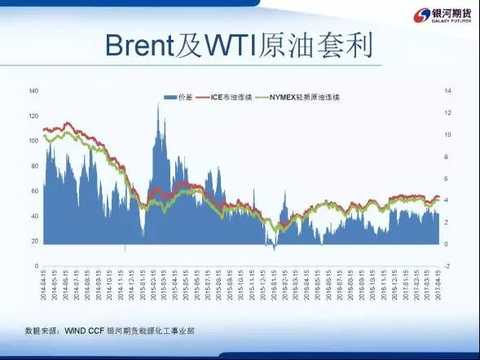
The first picture is the cross-market arbitrage of crude oil – the price difference between Brent crude oil and WTI crude oil. It can be found that Brent is always higher than WTI, but it is not always the case in history. Before 2009, the US crude oil import dependence was very high. The US WTI price was always higher than the Brent price. A large amount of crude oil came from the Atlantic Ocean to the Gulf of Mexico, and then came to the United States through inland transportation. The concentrated base of crude oil inventories. With the continuous development of US crude oil technology, the output of US crude oil has increased substantially, and the US dependence on crude oil imports has declined, so there is no need for so many cross-border crude oil trade.
On the contrary, as the production of shale oil in the United States continues to increase, there will be a trend of crude oil exports in the United States. Since then, Brent's spread to WTI has reversed significantly, and Brent has always been higher than WTI. If you look forward to the future, after Trump's election as US president and the lifting of the US crude oil export, if the production of shale oil continues to grow, will there be a major change in the world pattern of future crude oil trade? Will the United States evolve from an absolute crude oil importer to a supplier? This will bring more changes to the spread between WTI and Brent.
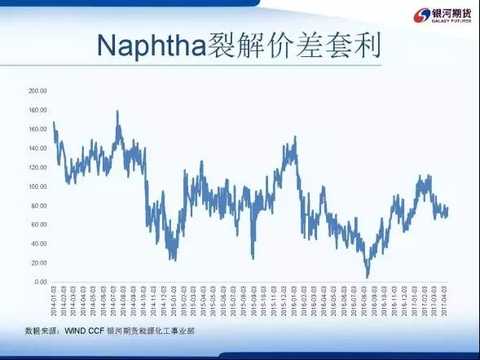
Let's take a look at the cracking spread arbitrage of Naphtha. The cracking spread of naphtha arbitrage reflects the refining process of a refinery crude oil. The crack spread is the price difference between raw materials and products. Because the ratio of raw materials to finished products is relatively fixed during the refining cracking process, the refinery will gradually expand its production capacity under the incentive of expanding profits, thus buying more crude oil to produce more naphtha, so crude oil The increase in demand led to an increase in the price of crude oil, and the supply of naphtha caused its price to fall, so the price difference in the middle narrowed to a relatively reasonable level.
The process of cracking the stone into the naphtha is actually a process of lowering the upstream cost profit. Because the crude oil itself is a complex mixture, it can be roughly converted according to the world-recognized 7.35 barrel-to-ton ratio when calculating the arbitrage. The processing fee from crude oil to naphtha is about 35-50 US dollars, so the whole formula will become Brent crude oil multiplied by 7.35 plus 35-50 US dollars. According to this formula, the price of naphtha can be seen in general. Oil profit and loss.
This crackerspread is not limited to naphtha arbitrage of crude oil. For most refineries, it will more often arbitrage through the ratio of crude oil, fuel oil and gasoline. By buying crude oil futures and selling gasoline fuel oil. Futures to lock in their own risks, if calculated according to the model of crude oil on the market for 3:2:1 ratio of cracking materials, in the trading market, the refinery buys 3 parts of crude oil and sells 2 parts of gasoline at the same time. Futures and 1 part of fuel oil futures. Different crude oil inputs have different outputs for finished products, so the refinery will adjust the hedging equipment according to its actual situation.
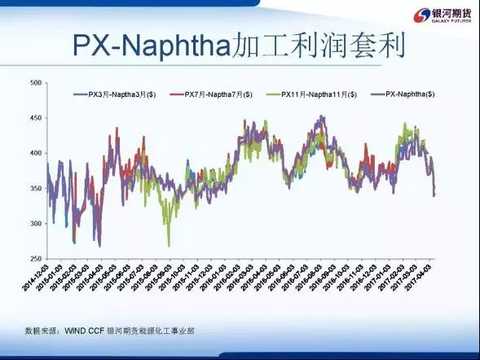
PX's price difference for naphtha. Continuous reforming of naphtha is a relatively mainstream process in the PX market, so the most common way to observe the processing profit of PX is to look at the PX's spread to naphtha. According to the theoretical value of the market, if the difference between the two is less than 330 US dollars, the PX factory may face losses. As can be seen from the above chart, since the PX capacity of South Korea was gradually put into production in 2014, the profit level of PX gradually recovered from the loss. Even after the overall commodity decline in 2015, the average processing fee of PX is still above 350 US dollars.
In 2016, due to the extremely limited production of equipment in the past two years and the new demand for domestic PTA equipment, the PX processing fee in 2016 rose to nearly one hundred tons or so. After the start of the second quarter of 2017, it will be affected by the opening of new installations in India. In the next few years, PX equipment oil at home and abroad may re-enter a peak period of production. It is expected that the processing fee of PX will not be optimistic in the future.
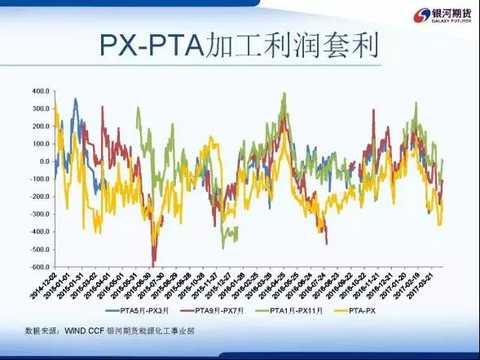
PTA processing fee chart. PX's processing fee calculation for TA is most familiar to many people in the industry. Usually, the price of PTA theory = CFR China PX price × 1.02 × 1.17 × 0.66 × RMB exchange rate +600. Here 1.02 corresponds to the import tariff of PX, 1.17 corresponds to domestic value-added tax, 0.66 is processing fee, and the last 600 refers to the processing fee required for processing one ton of PTA, the unit is RMB.
From this picture, after 2014, PTA has few opportunities to make money. The processing fee market fluctuates at 400-450 yuan per ton, and even more often it will reach a lower position. The reason is nothing more than a serious excess capacity. The demand for polyester and polyester ends is not good. However, after the second quarter of 2015, due to the abnormal parking of Xianglu and the bankruptcy of the PTA installation in the Far East, the domestic supply side showed a significant contraction, and the processing fee of PTA also showed a certain increase, even twice in 2016. It has reached more than 700 yuan per ton.
In the whole industry, the construction started higher, and the supply increased again. The downstream profit was good. When the demand was good, the processing fee of PTA could be maintained at a relatively stable level. However, once the downstream demand deteriorated, the price began to fall again. If PX to PTA to polyester is taken out separately, it can be found that PX has relatively good supply and demand polyester on the polyester end. Only PTA is difficult at both ends. The rise of raw materials is stable for the PTA plant, and the cost is downward. The transmission capacity is weak, so the processing cost of PTA is difficult to increase.
If the demand is not good, the price drop will eventually lead to the upward opening of the polyester production, which will lead to the PTA, which will also lead to a decline in processing fees. Therefore, the core factor for judging the price of PTA is the processing fee. The constant processing of the range of the upper and lower lines with the theoretical processing fee of 600 yuan per ton has become the key to the transaction.
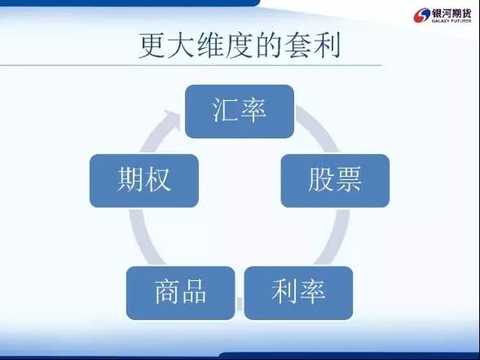
In addition to arbitrage on commodities, arbitrage has a larger dimension: exchange rates, stocks, commodities, options, and interest rates can form arbitrage on a larger scale. In the case of polyester, the cash flow profit of the polyester end surged in 2016. The net profit of many listed companies has doubled compared with that in 2015. If the entire PTA industry is sorted out, it can be concluded that the demand in 2017 is significant compared to previous years. To improve the conclusion, then you can buy some related listed companies, such as Rongsheng Petrochemical 002493, stock bar, Tongkun shares 601233, stock bar and other stocks. From the performance of 2016, we always keep the trend upward and outperform the trend of the broader market. For example, if future PTA options can be successfully launched, the arbitrage of futures and options will greatly enrich the trading strategy of the entire market, and at the same time enable better risk management for enterprises.
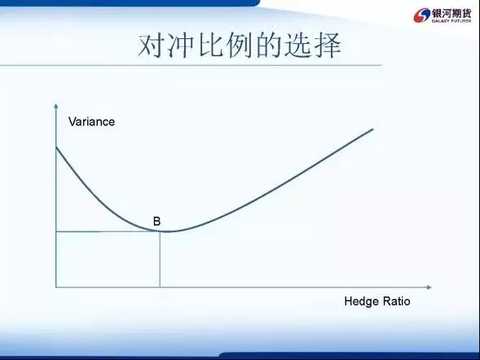
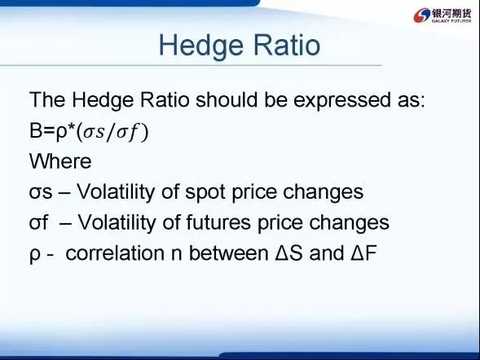
In the process of arbitrage, is the ratio of hedge arbitrage really one? The answer is obviously not. Variance is often used to measure risk. Variance needs to be hedged by some means, so it faces the problem of choosing the hedge ratio.
Finally, a simple combing of the basic steps of the hedge arbitrage model is not limited to a certain breed. I hope everyone can understand this set of methods and have some experience in the future work.
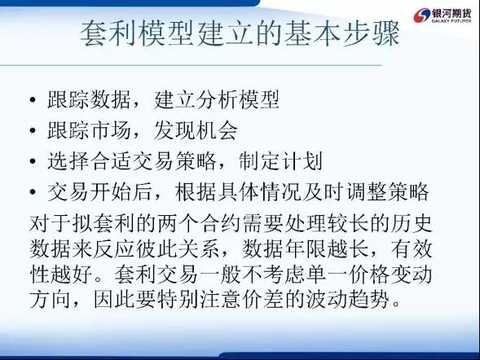
The first thing to do is to track the data, build an analytical model, and secondly, to track the market and find arbitrage opportunities. After finding an opportunity, you need to choose the appropriate trading strategy and develop a complete plan. After the transaction starts, make timely adjustments according to the specific situation, such as HedgeRatio needs to make constant changes. For the two contracts to be arbitrage, it is usually necessary to process longer historical data to reflect the relationship. The longer the data, the better the effectiveness. Arbitrage trades usually do not consider the direction of the single price change, so special attention should be paid to the fluctuation trend of the spread.
Some statistical arbitrage or quantization can be used to filter out the noise on the data. The advantage is that the data is processed and finally finds the arbitrage method based on the spear of a transaction. The reason why the quantified transaction can be successful is also to deal with such a spear, or called the main contradiction, while being able to expect the remaining factors to be zero for a period of time in the future. Nor can it be overly superstitious about statistical arbitrage, or it is necessary to dig deep into the data for analysis based on the big logic of the industrial chain.
Q&A:
➤ 1. What is the current domestic PTA capacity? What is the effective capacity?
At present, the domestic PTA production capacity is 49.13 million tons, and the effective production capacity is 47.03 million tons.
➤ 2. In 2017, the macro funds are tight, will it have a greater impact on the PTA industry chain, especially the downstream polyester?
Objectively speaking, the tightness of funds will definitely affect the entire industrial chain. Especially at the end of the first quarter, due to the tightening of supervision by banks, the discount rate of many acceptance bills even exceeded 7 points, which has a greater impact on the industry's cash flow. Such a cash flow gap will be compensated by time. Or make up for it through space. The so-called time compensation is to slowly post the money order; the compensation through space is that the price can go up to make up for a gap in the cash at the time.
➤ 3. PTA has fallen for a few years. Can the PTA industry carry out a round of supply-side reforms like other industries such as steel and coal?
The PTA industry is not the same as the steel and coal industries. There are more private capitals. Therefore, it is difficult for the country to shut down or even stop some factories with a single administrative order. In the past few years, due to the withdrawal of some production capacity or some devices have not fixed expectations. By-products, some supply-side market-oriented reforms have been carried out, but it is very difficult to imagine reforms like coal.
➤ 4. How is the trend of PTA 2017 from May to June 2017? What is the impact of oil prices on it? What is the impact of infrastructure real estate on it?
This problem is very big. The trend of PTA in May-June may not be worse than it is now, very good and unlikely. You can look at the delivery of the warehouse receipts after mid-May, and then make a judgment in one direction. The logic of the rise and fall of oil prices for large industries is actually a matter of cost center of gravity. From the data point of view, TA's trend and oil price are not the same, although it is a relatively direct product in the crude oil industry chain, but sometimes the trend is not so consistent.
Of course, if the oil price rebounds, it is a positive for the PTA industry. Textile is the most relevant to real estate. At present, the demand for terminals is very good. There is no accumulation of inventory in the manufacturing process, and the accumulation of inventory only appears in the polyester yarn. Therefore, after a sharp rise in real estate in 2016, some people who bought a house may be equipped with home appliances or textile curtains in 2017. Therefore, the impact of various restrictions on real estate in 2017 is not the present.
➤ 5. Where can I find the PTA factory's overhaul or its upstream and downstream overhaul, or the new plant, expansion and expansion information?
This is to give poker investors and an advertisement, you can find them on the public number and website. Of course, some information is definitely charged. I am also very willing to communicate with you in this regard.
➤ 6. Is PTA's futures positions related to arbitrage?
This problem has already been said before, because it is the structure of Contango, and the sharp increase in positions has indeed produced the results of arbitrage. You can go back and look at it.
➤ 7. The spread between the 1705 and 1709 contracts is only about 150, and the arbitrage gain is only about 4%. The benefits are low, the inventory is high, will the spread widen?
The 4% of the big money is really not very low. If it is played by 100 million or several hundred million, the income is relatively impressive. If Contango's structure is continuous deep down, the spread will be high, because the supply on the spot will indeed be more, forcing the spot price to continue to fall.
➤ 8. What are the core factors affecting PTA prices? What are the seasonal characteristics of PTA?
The core factor of the price of PTA is to find the processing fee, and the processing fee is the anchor. After selecting such an anchor, the analysis of PTA will be relatively easy, just like splitting the price, assuming a major factor, leaving All of the following factors make its expectations zero in the long run, which makes it easier to analyze some. The biggest seasonal feature of PTA is gold, nine silver and ten. Of course, B.chip may not be the same. B.Chip will start to work when it is cold in winter, and relatively more in the summer. Weakened.
➤ 9. In May, it catered to a short position. If the delivery is still unwilling to move the position, what is the expected price difference between 5 and 9?
This problem is relatively sensitive, and there must be goods. As for how to do it in the end, it is not easy for individuals to make pre-judgments.
➤ 10. What do you think about PTA from May to June or the first three quarters? How do you see it on one side? What are the opportunities for arbitrage?
In May, because of the short position, I don’t know whether it will be delivered or moved to September. I personally think that I can make a judgment on the transaction after mid-May, probably in May and June, PTA. If the price can continue to go a little further, then there may still be a chance to do more processing fees, then the unilateral words are actually unilaterally falling, 0, 9 contracts.
➤ 11. Look at the supply direction of the fundamentals to see the general direction of the medium term. When trading, it will do the current disk. In the first half of the year, I felt that there was an upward trend, but it often caused a decline due to the linkage (black, rubber, etc.). How do you see this accidentally injured PTA, such as funds entering and exiting?
PTA has its own logic. In the rise of a wave of commodities, PTA tends to rise in the last round. After the PTA rises, the overall commodity will fall. The linkage of the sector is a factor, but it is not necessarily called accidental injury. correct. The PTA fell because the fundamentals were not good, not because it was strong enough to cause other products to fall after falling.
➤ 12. What is the future direction of the September spread?
The current September spread needs to go in a bigger direction, perhaps in a certain extreme case, back to negative 200 or even more.
➤ 13. Book recommendation?
Personally think that the relatively better petrochemical industry is the "Petroleum Trade Handbook", the specific name may be different. There is also a book, divided into two volumes, which is a training material of Sinopec at that time, called "cost". This book is better for some of the ins and outs of the entire refinery.
➤ 14. At present, PTA is in an awkward situation, rising? Although the downstream inventory is still low, but the production and sales are weak, many polyesters have price reduction promotions, profits must be shrunk, and Gao Gang, which corresponds to high construction, needs to drop. And ACP did not work, the big factory has thrown PX transactions. fall? According to the current overhaul, Liwan, Yisheng, Taihua centralized maintenance, Zhejiang, especially Ningbo, there is the possibility of insufficient TA supply area in the future. Recently, the basis price transaction has shrunk from 220 before the delivery month to 170. Where is the point to break the bottleneck? What is the view on the future trend of TA?
In response to this problem, PTA has always been in a relatively awkward position, and sometimes it is relatively strong in the upstream and downstream, but the PTA is weak, which is related to its fundamentals. At present, the downstream inventory has dropped a lot, the promotion is also good, and the profit has recently decreased, but the cash flow is still a higher position besides B.chip.
The key to breaking the bottleneck may be the delivery in May. At present, it is really uncomfortable to post the above trend. It is recommended to observe as much as possible. If the profit of polyester end continues to shrink, it may be seen that polyester production will be reduced in a certain period in the future. Some feedback, resulting in weaker demand for stickers, will bring prices down the next platform, which may occur after June.
➤ 15. The warehouse receipts PTA is currently only over 600,000 tons. The other stocks add up to more than 1 million tons. The amount is really small, but why is it always said that TA's inventory is high?
The warehouse receipts have shown at least 70% of the overall inventory. As for some people who have always considered high, the reason is that the inertia of the PTA is weak, subjectively thinks that the inventory is high, but it is not. In addition, it is also related to the by-product of the future TA. The change of inventory should not only consider the current and static, but should consider the expectation more often.
Toilet Tissue,Toilet Tissue Paper,Tissue Paper Roll,Biodegradable Toilet Paper
C&S PAPER CO ., LTD , https://www.cstissue.com